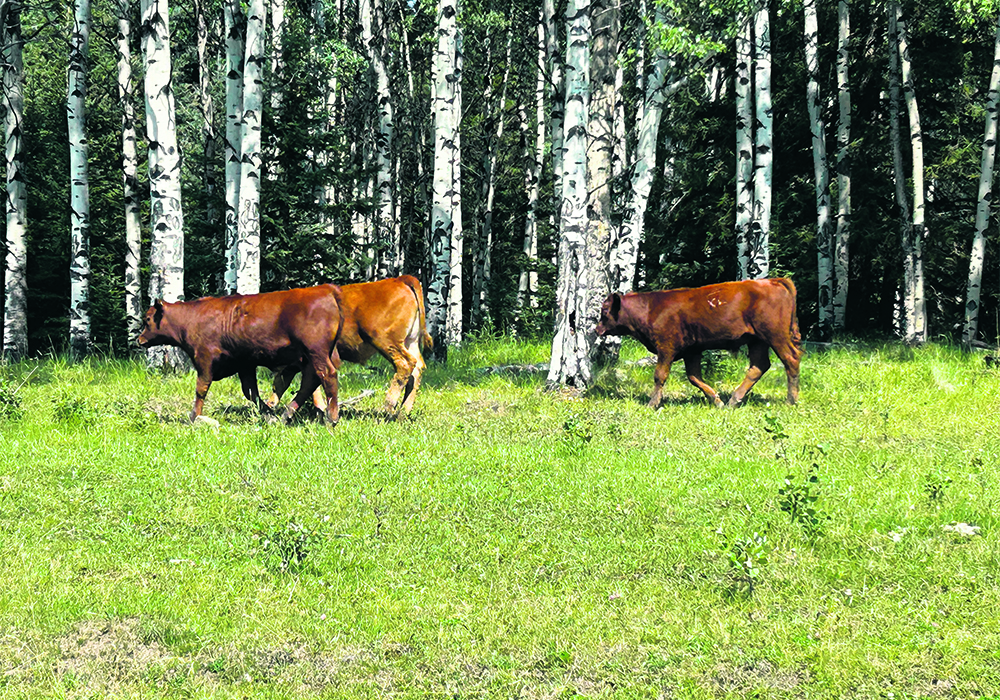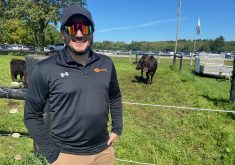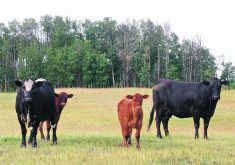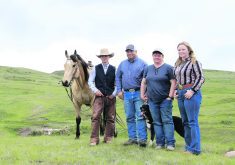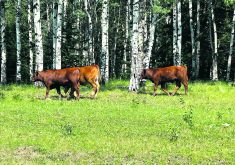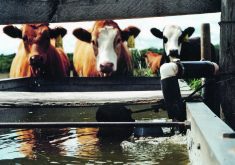The technology will mostly be tested in a forested lease and producers want to see how it will work with rotational grazing
A Saskatchewan rancher is ready to test virtual fencing on a large scale in tough conditions.
John and Deanne Chuiko own and operate CJ Ranching near St. Walburg, Sask. They have about 400 cow-calf pairs and 400 yearlings. A pillar of their operation is holistic management and rotational grazing and their forested land lease.
The Chuikos spoke at the Sprouting Success speaker series, sponsored by Ag-West Bio, Affinity Credit Union and the Global Agri-food Advancement Partnership, where they talked about their project with the virtual fence company, Vence. They said they are primarily using this technology on their forest lease, which is around 7,500 acres.
John Chuiko said because they are rotationally grazing, he thinks a virtual fence would work well on their operation.
“We’re moving the cattle every day. We’re with the cattle every day. Soil health is very important to us,” he said. “So if we’re able to use this technology to do the same thing to move our cattle around on our forest lease, I think that is going to be very, very good for our land.”
The project for Vence is funded through the Canadian Forage and Grassland Association, the Saskatchewan Stockgrowers Association and the Saskatchewan government.
The SSGA decided to fund the study after Vence, a California-based company, contacted it to carry out a trial of its virtual fencing technology in Saskatchewan, said Chad MacPherson, general manager of SSGA. At the time, the project was supposed to start in June 2023, but delays meant the Chuikos didn’t receive the base towers until partway through November, which John is currently assembling.
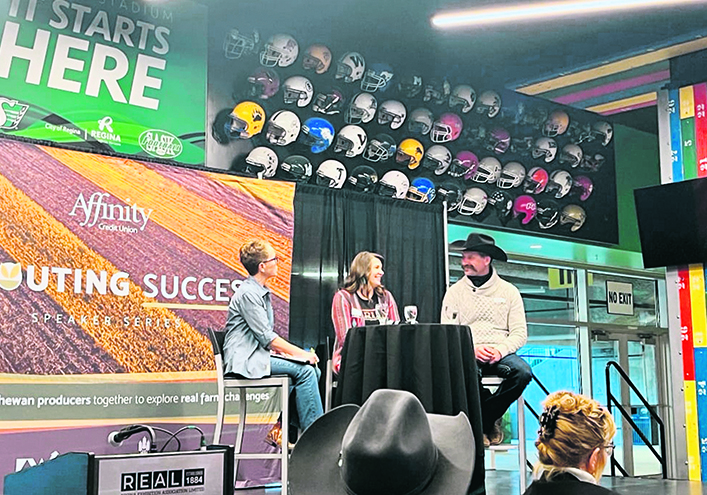
The Chuikos said a major challenge with this technology in Saskatchewan is connectivity.
“That is the challenges of this, because it all has got to be able to talk — the base stations have to talk to the GPS and they have to talk to the collars. So it’s going to be interesting to see how this all works,” John said.
“That’s also the beauty of the trial, right?” Deanne added. “They’re holding our hands.”
The Chuikos said they were approached about carrying out the trial because of the vast size of their forested lease. They say the technology is suited for open prairie and forested land.
“They just want to try it in kind of some rougher country… and that’s why this was interesting to them. But it would work just fine on open ground,” John said.
After talking to the engineers, John said the technology will be efficient for rotational grazing but might not work to rotate their cattle every two hours. However, he said they won’t know for certain until they start using the technology.
“(The engineer) said he’s not sure that it’s going to be able to dial down that much, that specific. So we’re going to just do whatever the tech is going to allow us to do,” John said.
“That’s still up in the air what we’re going to be able to do with it.”
He said he doesn’t believe the technology is financially viable for producers in Saskatchewan now, but he believes it will become more affordable as it becomes more common.
“I think the cost is quite high on this technology right now. So that will be the thing if we can make this technology user-friendly and not quite as expensive.”
The timeline for this pilot project is two years. John said they plan to begin with the grazing season this spring.


